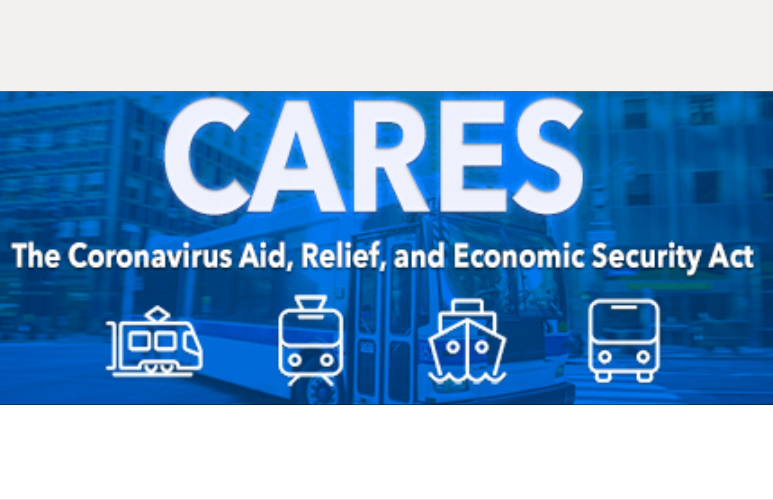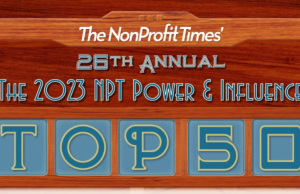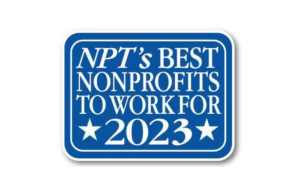Elements of the recently passed CARES Act, the $2.2 trillion bill that provides economic relief for individuals, small businesses, corporations, hospitals, state and local governments, and nonprofits, are starting to roll out.
Some of the financial relief provided for nonprofits in the Act is more beneficial than others, and not all of the relief is available to all types of nonprofits. For instance, the centerpiece of the Act — and its most popular program, by far — is the Paycheck Protection Program, which is generally limited to nonprofits exempt from federal income tax under Section 501(c)(3).
The following guide provides an overview of the key aspects of the financial assistance available to nonprofit organizations under the Act, explains details regarding eligibility, features and benefits, program functionality, and loan repayment and forgiveness, among other details. In addition, throughout the guide and at the end are links to key external resources, along with some FAQs.
Paycheck Protection Program (PPP) Loans
Eligibility: Small businesses with fewer than 500 employees, select types of businesses with fewer than 1,500 employees, 501(c)(3) nonprofits with fewer than 500 employees, and some 501(c)(19) veterans’ organizations can apply. PPP loans are offered by private lenders and backed by the U.S. Small Business Administration (SBA). The applicant must have been in operation as of February 15, 2020 and, as of that date, had employees for whom it paid salaries and payroll taxes; the applicant cannot hire new employees now to justify the need for a PPP loan.
Maximum Loan Amount: Loans are given up to the maximum of the lesser of $10 million, or 2.5 times the average monthly payroll costs during the one-year period before the date on which the loan is made. Payroll costs are capped at $100,000 on an annualized basis for each employee. The exclusion of compensation in excess of $100,00 applies only to cash compensation, not non-cash benefits. Payroll costs include:
- Salary, wages, commissions, or tips (capped at $100,000 on an annualized basis for each employee);
- Employee benefits including costs for vacation, parental, family, medical, or sick leave; allowance for separation or dismissal; payments required for the provisions of group health care benefits including insurance premiums; and payment of any retirement benefits; and,
- State and local taxes assessed on compensation.
Repayment Terms: It’s a two-year term and payments are deferred for six months. There are no prepayment penalties or fees.
Interest Rate: The interest rate for this program is currently set at 1%. No personal guarantees or collateral are required.
Loan Uses:
- Payroll costs, including employee benefits (such as employee healthcare costs and retirement benefits) and state and local taxes assessed on compensation;
- Rent, under leases in force before February 15, 2020; and, interest on mortgage obligations, for mortgages in force before February 15, 2020;
- Utilities, for which service began before February 15, 2020; and,
- Interest payments on any other debt obligations that were incurred before February 15, 2020
Loan Forgiveness: Part of the loan may be forgiven and will not be counted as income to the borrower if it is spent during the first eight weeks on certain operating expenses. Loans are forgiven when proceeds are used for any of these costs:
- Payroll costs, excluding prorated amounts for individuals with annual compensation greater than $100,000. Payroll costs include salaries, employee benefits (including health insurance benefits, retirement benefits, and sick and vacation leave), and state and local taxes assessed on compensation;
- Rent pursuant to a lease in force before February 15, 2020;
- Interest on mortgage obligations, for mortgages in force before February 15, 2020; and,
- Electricity, gas, water, transportation, telephone, or internet access expenses for services which began before February 15, 2020
Restrictions on Loan Forgiveness
- For the amounts to be forgiven, the borrower must maintain the same average number of employees for the first eight-week period beginning on the origination date of the loan as it did from February 15, 2019 – June 30, 2019 or from January 1, 2020 – February 15, 2020;
- Loan forgiveness is reduced proportionally if the employer reduces the number of full time employees (FTEs);
- Loan forgiveness also will be reduced if the borrower decreases salaries and wages by more than 25% for any employee that made less than $100,000 annualized in 2019;
- The borrower has until June 30, 2020 to restore full-time employment and salary levels for any changes made between February 15, 2020 and April 26, 2020; and,
- No more than 25% of the forgiven amount may be for non-payroll costs.
Requesting Loan Forgiveness
The borrower must submit a request to the lender servicing the loan. The request must include documents that verify the number of full-time-equivalent employees and pay rates (including employee healthcare costs and state and local taxes on compensation), as well as the payments on eligible mortgage interest, lease and utility obligations.
The borrower must certify that the documents are true and accurate and that the borrower used the forgiveness amount to keep employees and make eligible mortgage interest, rent and utility payments. The lender must make a decision on the forgiveness within 60 days.
- Application: The borrower must apply though lenders that already offer SBA loans. Applicants can apply through any existing SBA 7(a) lender or through any federally insured depository institution, federally insured credit union, and Farm Credit System institution that is participating in the PPP. Other regulated lenders will be available to make PPP loans once they are approved and enrolled in the program. The application period opened on April 3, 2020. While the loan program is open until June 30, it is highly recommended to apply as soon as possible because there is an overall cap on funding for the PPP. In addition, lenders need time to process loan applications. The centralized application to submit to lenders can be found by clicking here.
Economic Injury Disaster Loans (EIDL):
- Eligibility: Open to small business owners, including private nonprofit organizations that are NGOs or entities that currently have an effective ruling letter from the IRS recognizing federal tax exemption under sections 501(c),(d), or (e) of the Internal Revenue Code (including 501(c)(6) and (c)(4) organizations), or satisfactory evidence from the State that the non-revenue producing organization or entity is a nonprofit one organized or doing business under State law, or a faith-based organization.
Application Requirements
- Organizations Involved in Lobbying or Political Campaign Activity: While the EIDL application asks if the organization is engaged in “the business of lobbying” (this is due to long-standing SBA policy governing the use of SBA funds), this means specifically whether the organization is “primarily engaged in political or lobbying activities.”
For Internal Revenue Service and other purposes, this “primary” purpose test generally means spending more than 50% of your activities or expenses on lobbying activities or political campaign activities. If so, the organization would not be eligible for an EIDL. (Note that the leading IRS definitions of “lobbying” do not include most regulatory/administrative lobbying – only legislative lobbying – but it is unclear what is intended here.)
- Personal Guarantees: EIDLs of up to $200,000 can be approved without a personal guarantee. Any amount over $200,00 will require a personal guarantee.
- Collateral: No collateral is required for loans of $25,000 or less. For loans of more than $25,000, a general security interest in the organization’s assets can be used for collateral instead of real estate.
- Loan Uses and Restrictions: These funds are intended to cover payroll and other operating expenses that the organization could have otherwise met in a non-disaster economy. The loans are not intended to replace lost sales or profits or to pay for expansion. Funds cannot be used for refinancing, making loan payments on other federal debts, to repair physical damages, to pay IRS tax penalties, or to pay out dividends.
- Maximum Loan Amount: Loans up to $2 million to cover temporary loss of revenue.
- Repayment Terms: It’s a 30-year term. First month’s payments are deferred for a full year from the date of the promissory note. These are favorable terms but not a forgivable loan like the PPP.
- Interest rate: 2.75% for nonprofits.
- Application: Direct application to SBA: https://covid19relief.sba.gov/#/
Economic Injury Disaster Advance Loan
- Eligibility: Open to small business owners, including private nonprofit organizations that are NGOs or entities that currently have an effective ruling letter from the IRS recognizing federal tax exemption under sections 501(c),(d), or (e) of the Internal Revenue Code (including 501(c)(6) and (c)(4) organizations), or satisfactory evidence from the State that the non-revenue producing organization or entity is a nonprofit one organized or doing business under state law, or a faith-based organization.
- Maximum Loan Amount: Up to $10,000.
- Repayment Terms: Does not have to be repaid if spent on paid leave, maintaining payroll, increased costs due to supply chain disruption, mortgage or lease payments, or repaying obligations that cannot be met due to revenue loss.
- Application: Direct application to SBA: https://covid19relief.sba.gov/#/
Employee Retention Payroll Tax Credit
- Eligibility: Available to small businesses and nonprofits (including Section 501(c)(3), (c)(4) and (c)(6) organizations, among others).
Program and Eligibility Terms:
- Employers fully or partially shut down or with 50% drop in gross receipts in a quarter compared to prior year (until a return to 80%).
- Shut down must apply to all aspects of the employer.
- Refundable tax credit for 50% of the wages (including employer’s health plan expenses) paid by the employer, up to $10,000 per employee.
- Employers are not eligible if they received a PPP loan.
Delay of Payroll Tax Remittance
- Amounts of the employer portion of the Social Security payroll tax that would normally be due for the period from March 27 to December 31, 2020 may be delayed. If an employer chooses to delay the payment of the employer portion of the Social Security payroll tax that would be due during this period, it would follow the below payment schedule for the payment to be considered timely: 50% due 12/31/2021 and 50% due 12/31/2022.
- This payment does not apply to the employer’s share of the Medicare payroll tax. Those payments, as well as depositing the employee’s withholdings, must still be made on time.
- Does not apply to employers which have loans forgiven under the PPP.
FAQs
Here’s where you can go to find out more information about these federal loan programs under the CARES Act:
U.S. Small Business Administration: https://www.sba.gov/page/coronavirus-covid-19-small-business-guidance-loan-resources
U.S. Small Business Administration’s Interim Final Rule on PPP: https://www.sba.gov/sites/default/files/2020-04/PPP–IFRN%20FINAL_0.pdf
U.S. Treasury Department:
https://home.treasury.gov/policy-issues/top-priorities/cares-act/assistance-for-small-businesses
U.S. Chamber of Commerce Foundation: https://www.uschamberfoundation.org/reports/coronavirus-emergency-loans-guide-and-checklist-small-businesses-and-nonprofits
American Society of Association Executives: https://www.thepowerofa.org/coronavirusadvocacy/
Can I apply for more than one type of loan? Yes, eligible organizations (e.g., 501(c)(3) organizations) can apply for both a PPP loan and an EIDL loan – so long as the funds are used for different purposes; no “double-dipping” is permitted.
Where do I apply for these loans?
Applications for EIDL loans are completed online through the SBA website (https://covid19relief.sba.gov/#/).
Applications for PPP loans must be done through an SBA-approved lender.
* * * * *
Jeff Tenenbaum is managing partner and Nisha Thakker is counsel at the Tenenbaum Law Group PLLC in Washington, D.C. You can contact the authors at [email protected] or [email protected]









